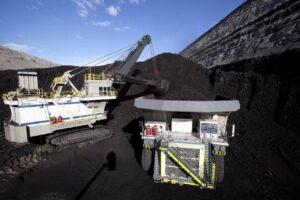RenewEconony and Informa co-hosted day 2 of the 2017 Large-scale Solar Conference in Sydney on Tuesday. The following is a round-up of some of the themes that emerged from the day’s presentations and panels. For more from the two-day conference, click here.
1. Large-scale solar is a tremendous investment opportunity
According to Jevon Carding, who is a senior associate at Lighthouse Infrastructure, big solar is shaping up to be a big ticket item for institutional investors in Australia. Which is why his company has set up the Lighthouse Solar Fund, targeting equity in utility-scale and commercial and industrial rooftop solar and storage.
“Institutional investors are searching for yield, and face a shortage of attractive assets,” Carding told the conference, co-hosted by RenewEconomy and Informa in Sydney on Tuesday. “Solar could be an answer.”
Carding said solar had many of the characteristics of an attractive investment, including falling technology prices, high electricity prices, low level of operational risk, enduring relevance, increasing social acceptance, long asset life, and, of course, “opportunity for scale in the sector.”
2. Investor confidence in solar is growing rapidly, too
Just ask Lane Crockett, whose company – Impact Investment Group – has announced plans to launch its second solar focused fund, as early as mid-2017.
“This time we’re going to ask investors to take construction risk, and to take some merchant exposure,” Crockett told the conference.
“We expect this fund will be between $300-$500 million, and asset size is taking a step up as well. And, of course, bigger fund, bigger impact.
3. Large-scale solar investment delivers more than just financial returns
According to Crockett, IIG’s original $100 million Solar Income Fund will wind up achieving $50 million worth of avoided environment and health damages.
On top of that, he says, “just the assets that will make up a $100 million solar fund will avoid 16,000 (fossil fuel generation pollution) connected illnesses in Australia over its lifetime.
4. The Victorian government’s energy storage tender is (possibly) focused on batteries
With an energy storage tender in the works, it’s no surprise to hear that the Victorian state government is focusing a good deal of its policy energy in that direction. But what technology, if any, are they favouring?
Benjamin White, from the Andrews government’s department of environment, might have offered a clue in his presentation to the conference on Tuesday morning.
“Energy storage is absolutely front and centre in our conversation and our debate and … in Victoria… we see energy storage unlocking the full potential of RE, particularly where we have network constraint,” he said.
“Of course, battery storage, takes centre stage, in terms of timeliness to deploy. But solar thermal and pumped hydro also present significant opportunity.”
5. NSW hearts solar – rooftop and large-scale
We’ll let the charts do the talking (taken from the presentation of NSW renewable energy advocate Amy Kean)…













